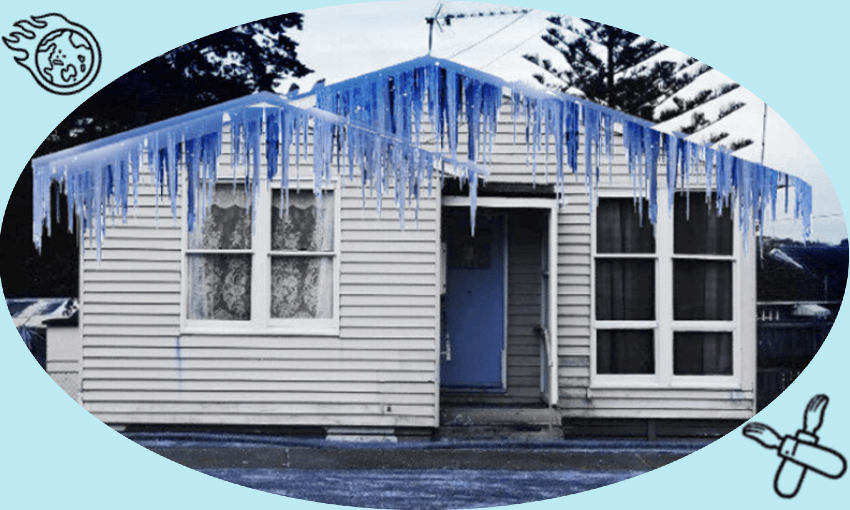Data released under the Official Information Act shows more rentals are now up to Healthy Homes Standards, but those that aren’t are getting away with it.
Amidst the generalised despair about the last government’s failure to deliver on certain key promises, it’s easy to forget it had some major wins.
Take, for instance, the healthy homes standards, introduced in 2019 in an attempt to do something about the extravagantly bad quality of this country’s rental housing – something that consistently makes overseas observers shake their heads in bafflement. The standards are not especially demanding. They require only that a rental property has a fixed source of heating, is insulated where practicable, has extractor fans in both bathroom and kitchen, boasts functioning water pipes and gutters, and does not have massive holes in its walls. These are not, on any objective measure, unreasonable demands, even if some landlords treated the law change like they would a declaration of war.
But have the standards made any difference? Although objective data is in short supply, the Ministry of Housing and Urban Development does commission an annual survey of renters and landlords, the 2024 edition of which has been released to the Spinoff under the Official Information Act.
The survey reveals some good news. Nearly one-fifth of rental owners say they were compliant with the standards even before they were introduced; taken at face value, these are the good landlords, of which the country needs a far larger supply.
Even more pleasingly, the data suggest the standards have made a substantial difference. Some 84% of renters say their property has an “acceptable” form of heating installed (heat pumps, for the most part), up from 67% in 2020. Similarly, 77% of renters say they can heat their living room to a “comfortable” temperature all year round, up from 50% in 2020.
Perhaps most tellingly, the proportion of renters saying their home has a problem with damp or mould has fallen from 57% in 2021 to 44% today. The proportion citing problems with heating their home or keeping warm in winter has likewise fallen, from 55% to 42%.
When it comes to ventilation, 79% of renters report their property has an extractor fan in good working order in the bathroom, up from 64% in 2020. Similarly, 81% say there is a fan in the kitchen, up from 66%.
These marked improvements since 2020 plausibly tell us two things. One, the standards have begun to work. This is reassuring: it shows us that when the state does something, when regulation is enacted, improvements follow. Second, if there is to be further progress, it will come once again from regulation: the “market” so beloved of neoclassical economists had decades to raise rental standards to an acceptable level, and failed abysmally.
We are, as a result, only at base camp on the mountain of rental reform. Recall that around four in 10 rentals, according to their occupants, are still to some extent damp, mouldy or difficult to heat. Within that, 6-8% have a “major” problem with mould and cold. On one measure, this proportion has not changed since 2020.
Likewise the situation with drainage. According to renters, roughly one-fifth of properties have unresolved drainage issues; within that, 10% of renters are not aware that their landlord has any immediate plans to fix the problem.
We can also take that staple of low-grade New Zealand rental housing, the gaping hole in the wall. Just under a quarter of renters report their properties have “unreasonable” gaps and holes that cause “noticeable” draughts. Within that, in 14% of cases their landlord has no apparent plan to address the issue. Some 15-18% of rentals, meanwhile, have no appropriate source of heating, depending on whether one believes renters or landlords.
Most concerning, when landlords are asked whether they have prepared their properties to meet the Healthy Homes Standards, around 8% still say “no, not really” or “not yet”. Similarly, around 7% of landlords are officially described as being “in denial” about the legally mandated standards, a figure that is unchanged since 2020.
What does all this tell this? If we take the issues with dampness, heating and drainage, roughly 20-40% of rentals – that is, hundreds of thousands of properties – still display some level of defects. Within this, somewhere between 8% and 15% of rentals are extremely damp, mouldy or otherwise unsafe, and their landlords are utterly unrepentant.
Why have such problems not been regulated out of existence? A clue may lie in the inspection regime. Labour is to be saluted for one epochal shift: rather than requiring tenants to report problems, as was previously the case, Jacinda Ardern’s government gave officials the power to proactively launch investigations.
It did not, though, support this shift with sufficient resources. Two years ago, the inspectorate tasked with assessing New Zealand’s 600,000-odd rental properties boasted a grand total of 37 staff. In response to the Spinoff’s enquiries, the Ministry for Business, Innovation and Employment (MBIE) has revealed that the number today stands at … 35.
This inspectorate, MBIE insists, has not been harmed by the new government’s cost-cutting regime, nor has it been instructed to dial down its regulatory efforts. But National hardly need do so.
Even under Labour, the rental inspectorate spent an awful lot of time “educating” landlords about the standards set out in law and very little time actually – you know – enforcing them. In the last year, rental inspectors issued 316 warnings, but took just four landlords to the Tenancy Tribunal. The result – as the survey shows – is that the very worst landlords continue to flout the law, safe in the knowledge that they are extremely unlikely to be prosecuted.
Little change can be expected from the current government. But while they are in opposition, Labour and the Greens should draw up plans for another, more comprehensive, phase of regulation. The slumlords deserve no second chances, no first warnings. One or two of them need to be put out of business, and their properties snapped up by better owners. Only then will the remaining slumlords be frightened into compliance; only then will the nirvana that most developed countries have long since achieved – a stock of predominantly warm and safe rental homes – come finally within reach.

